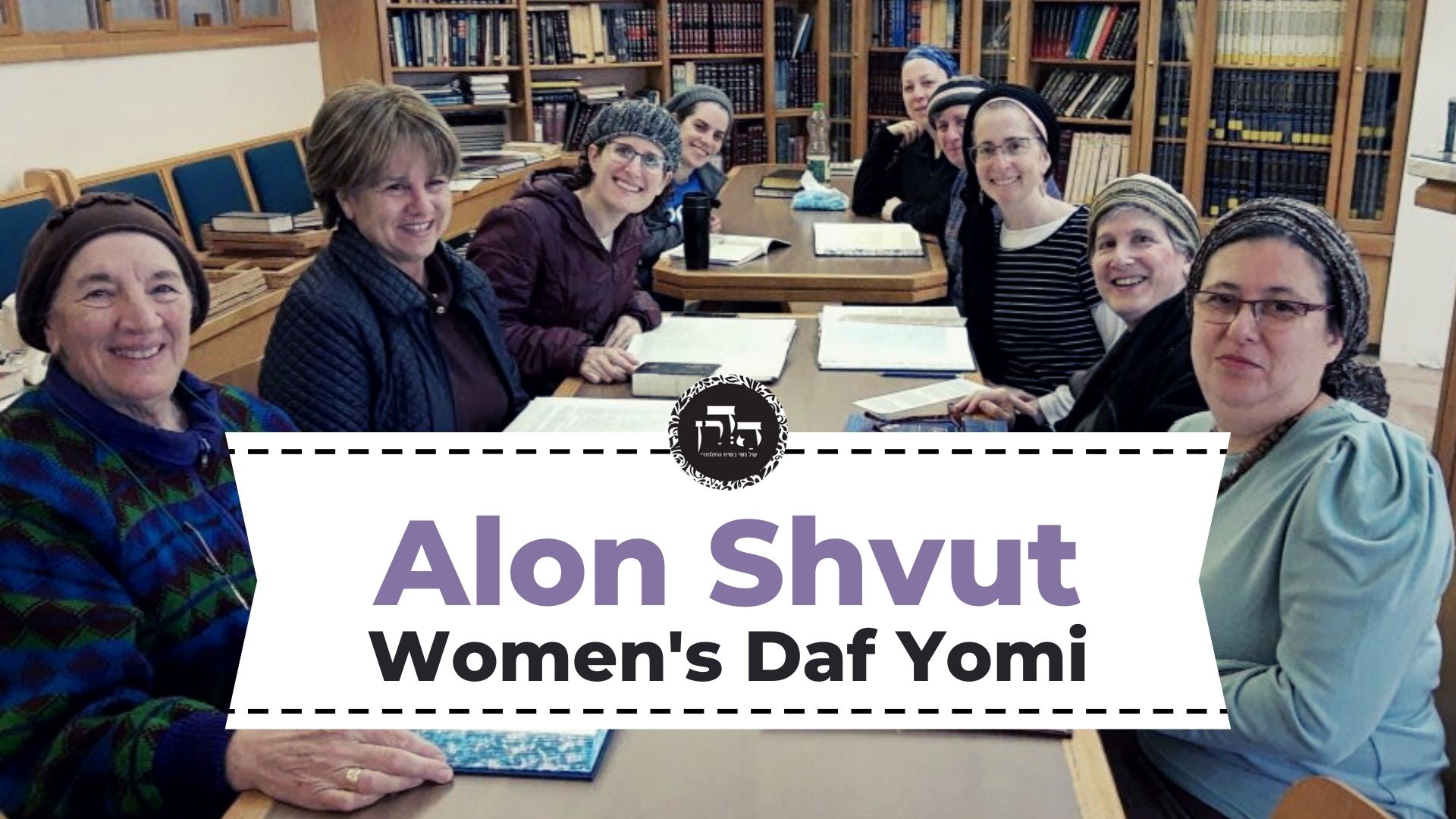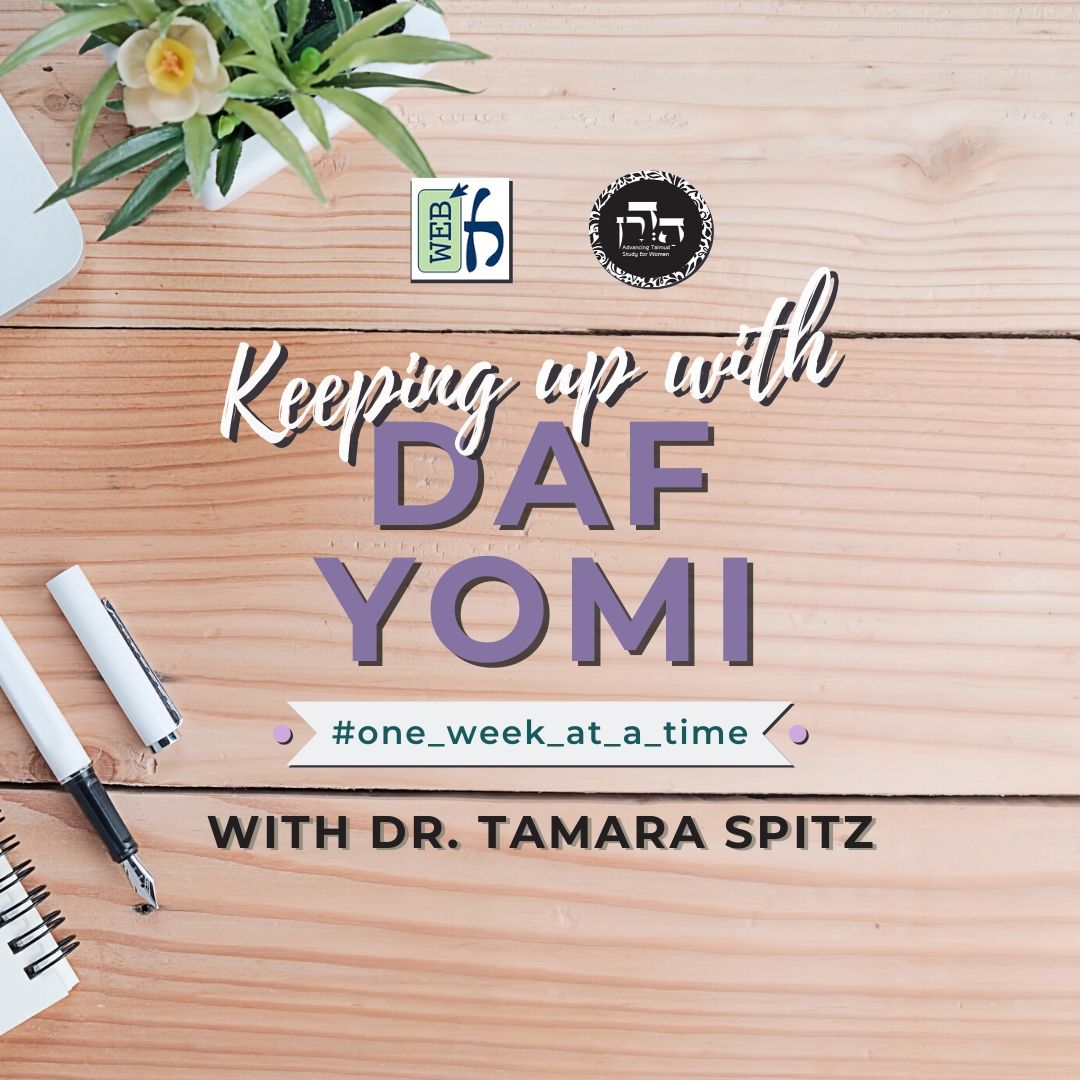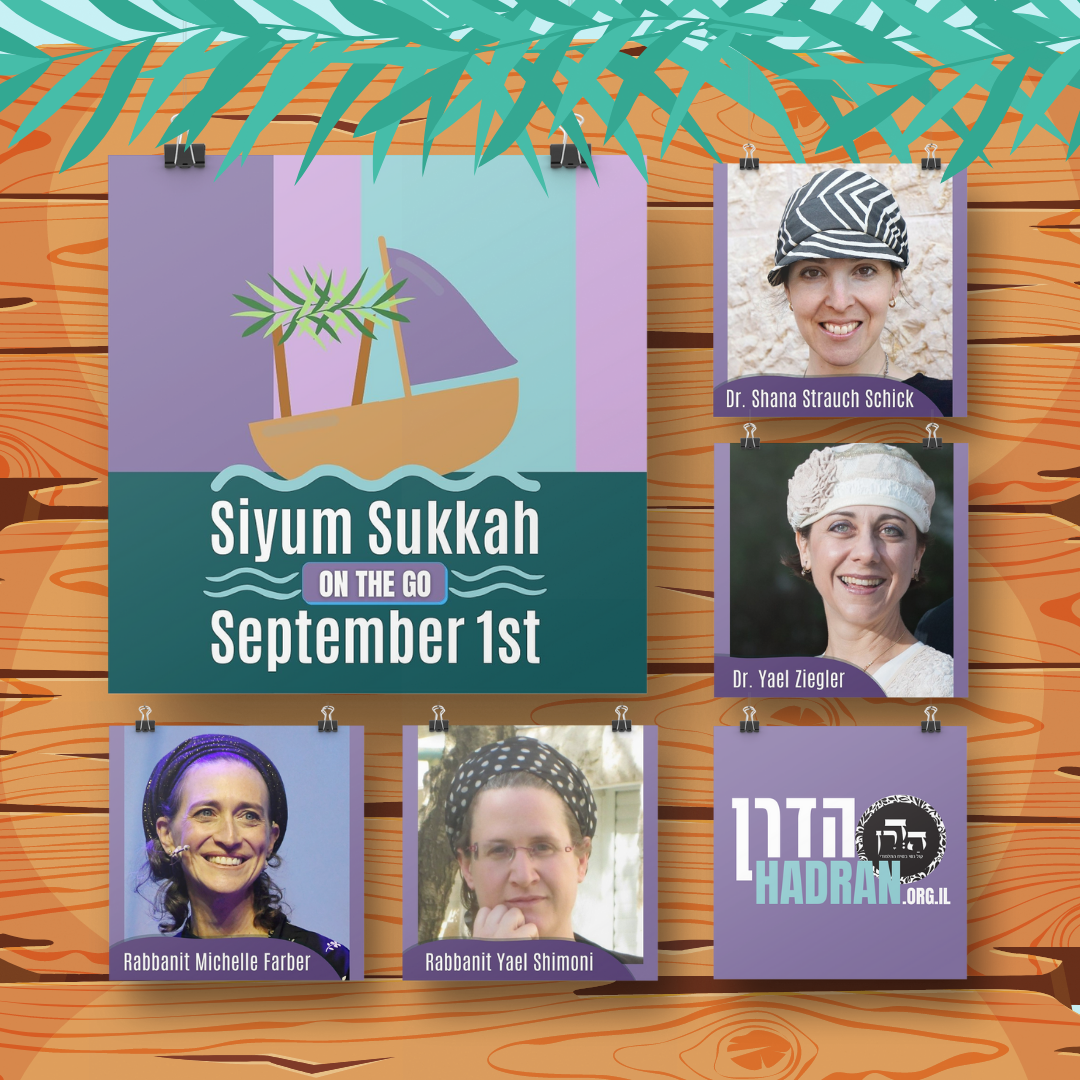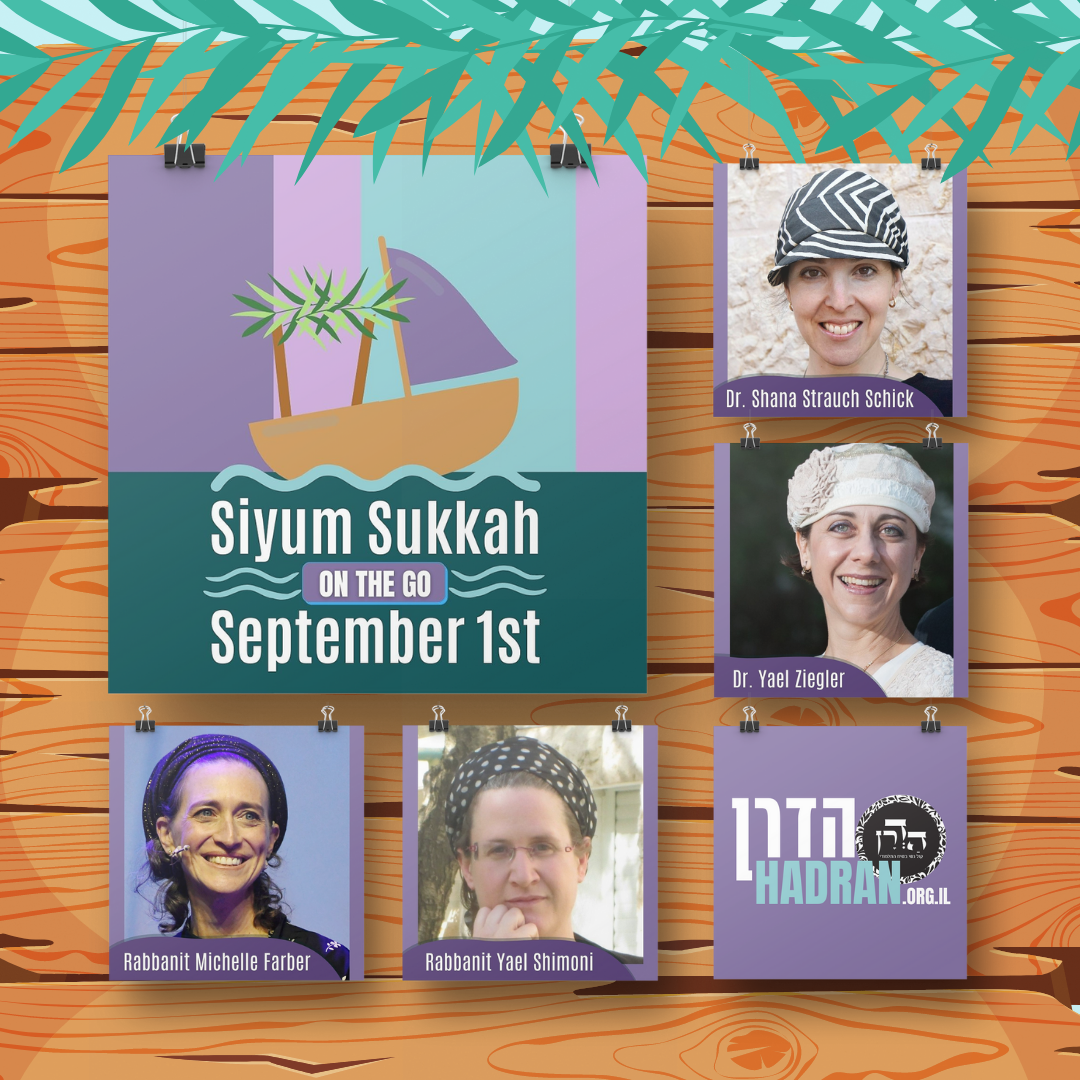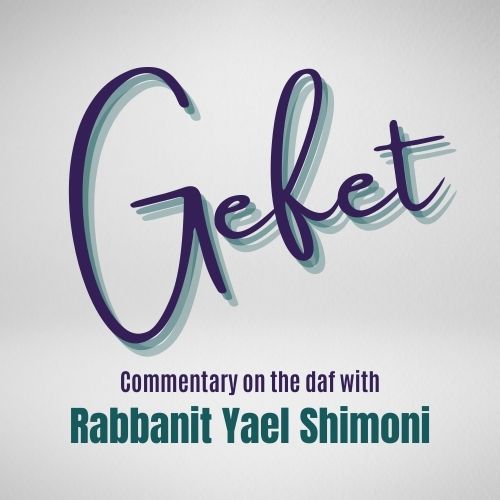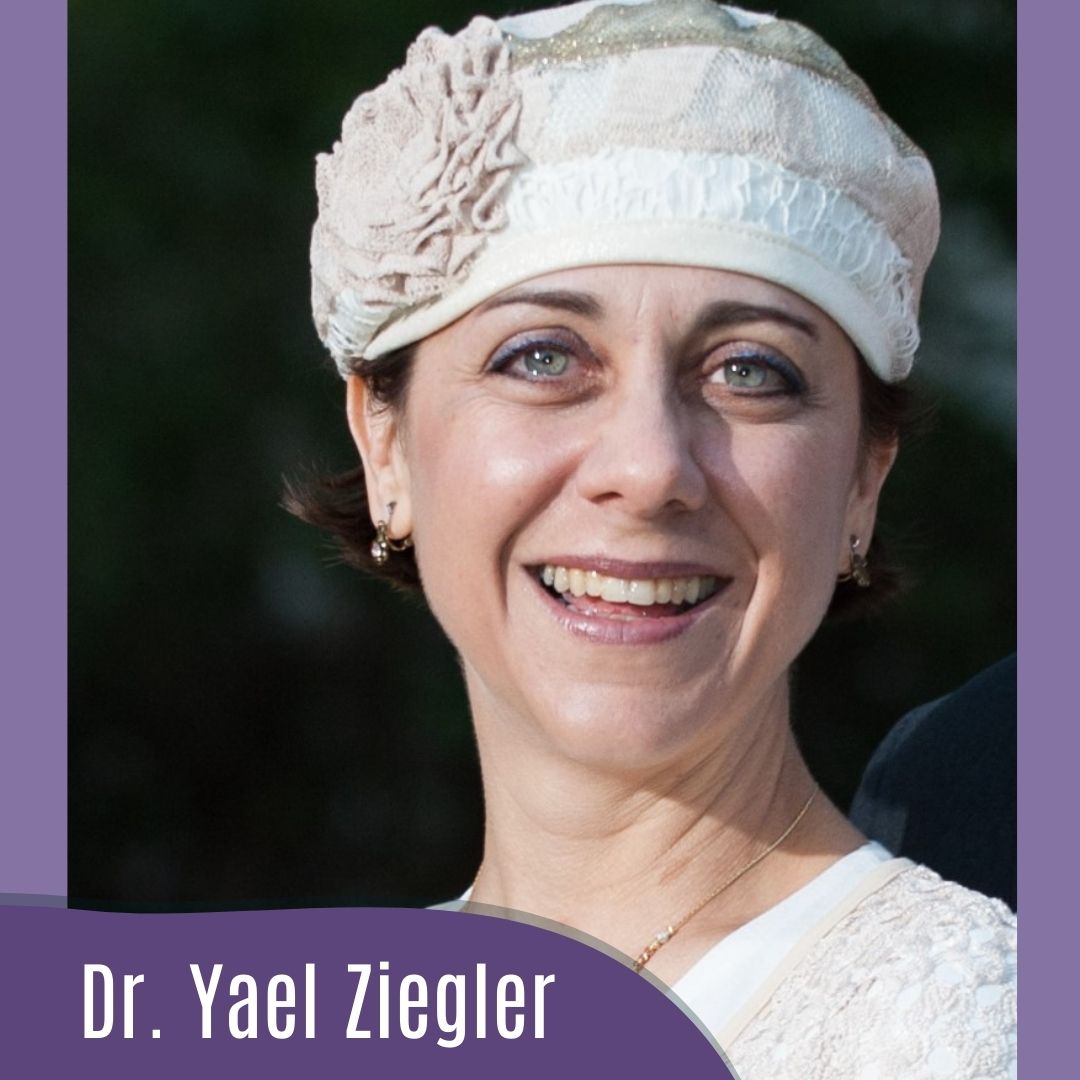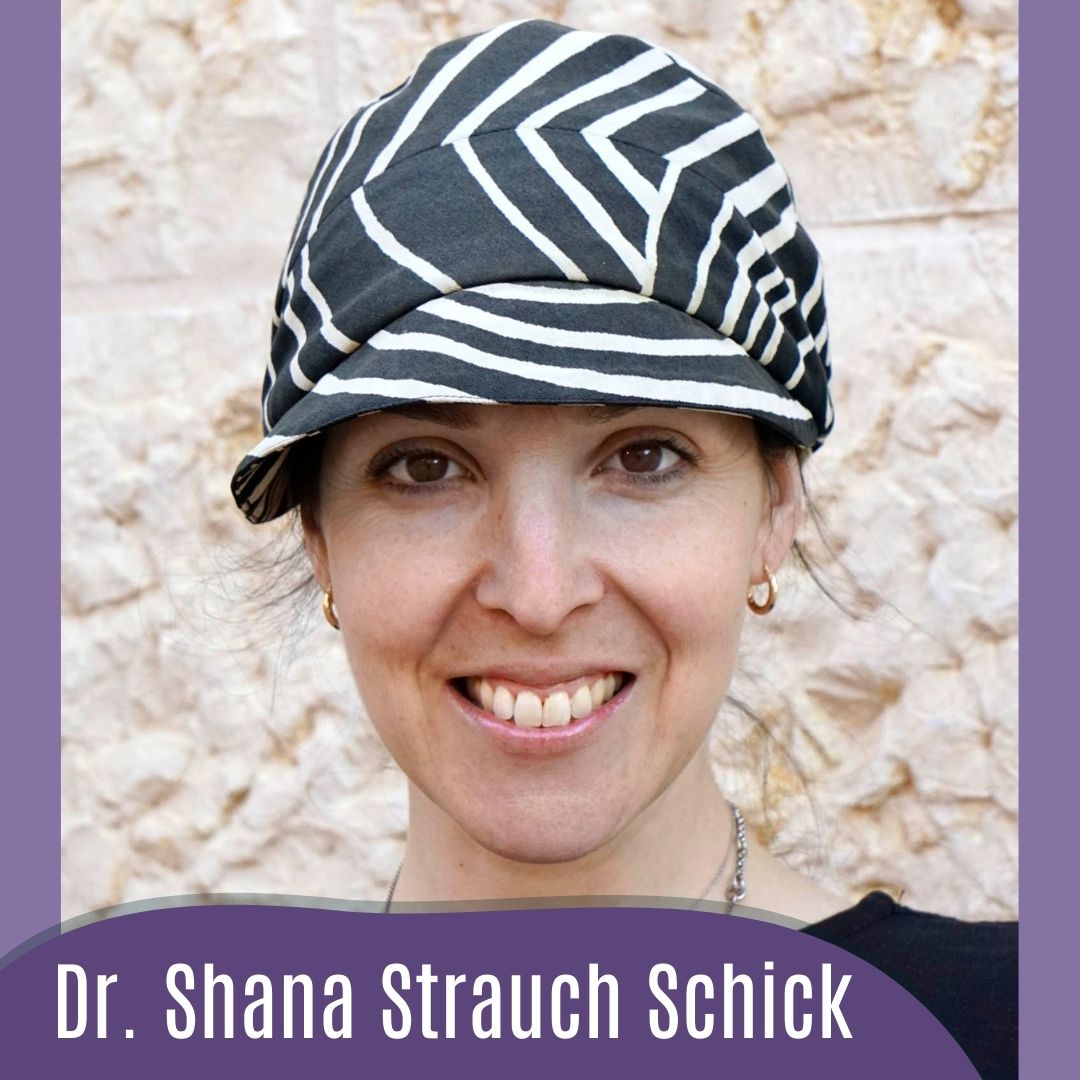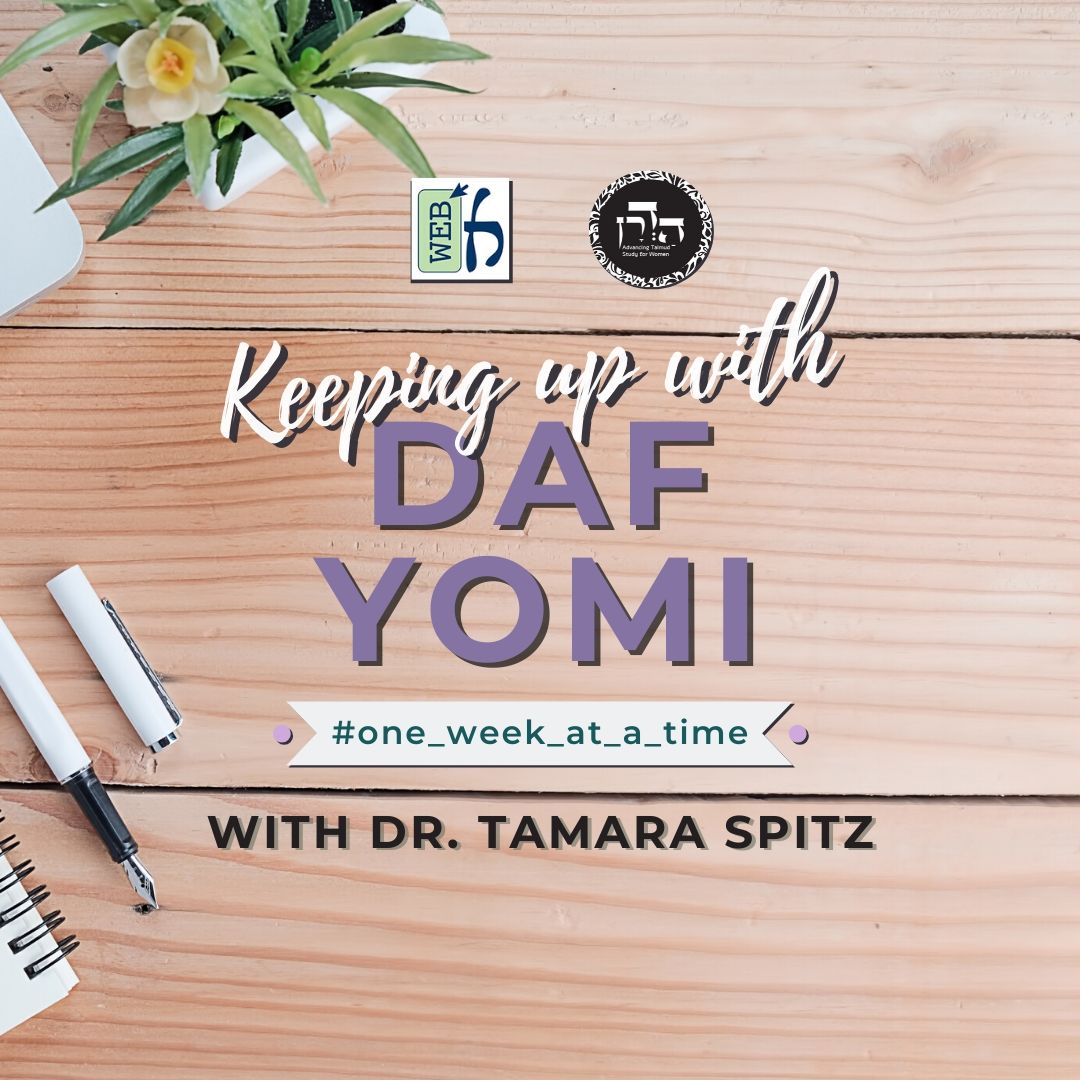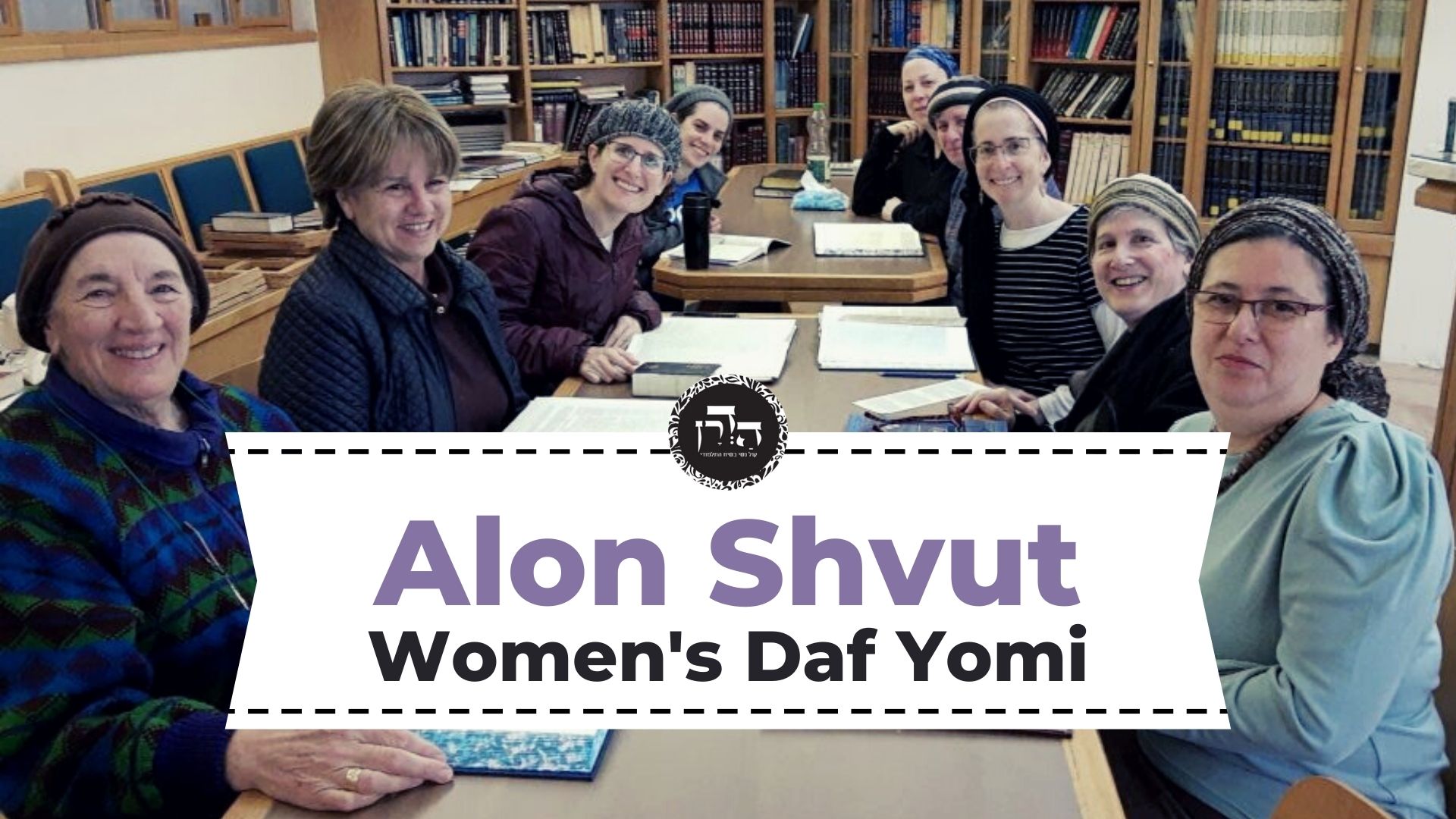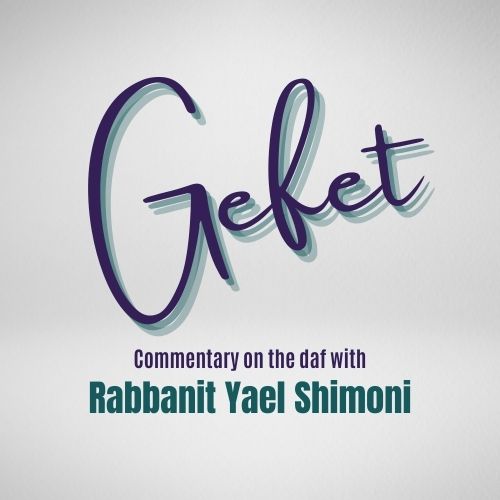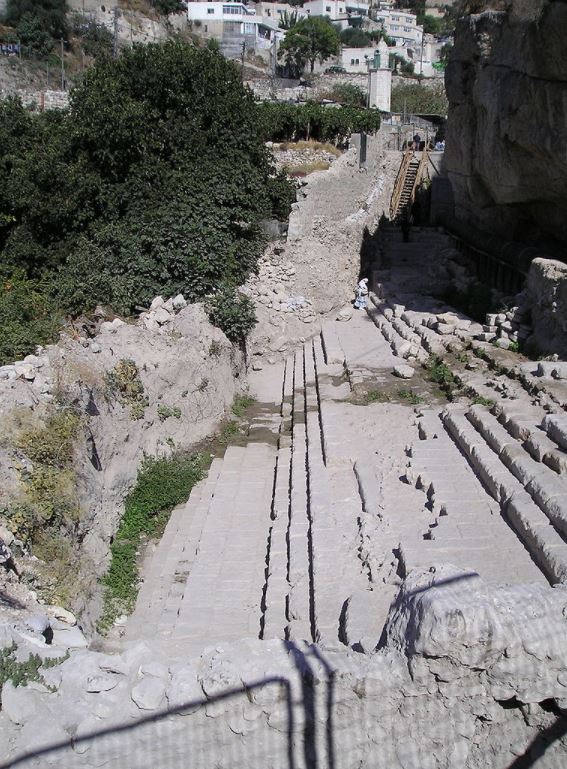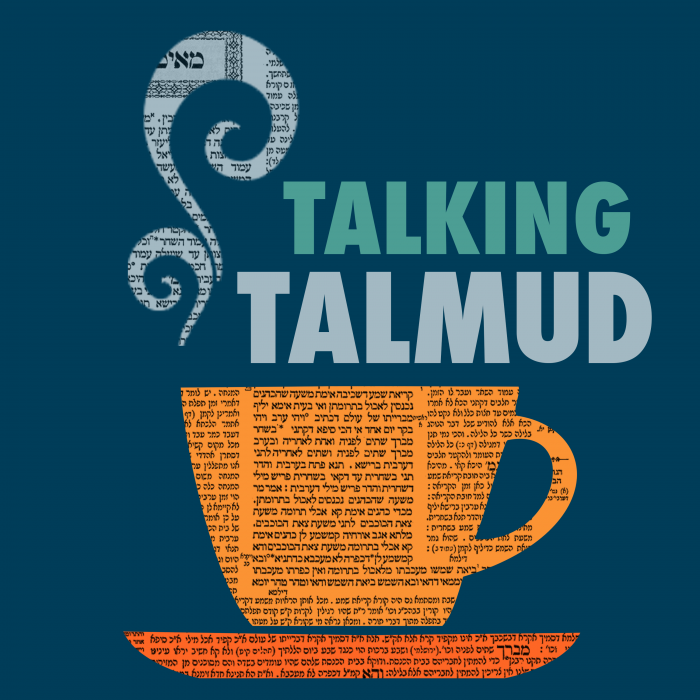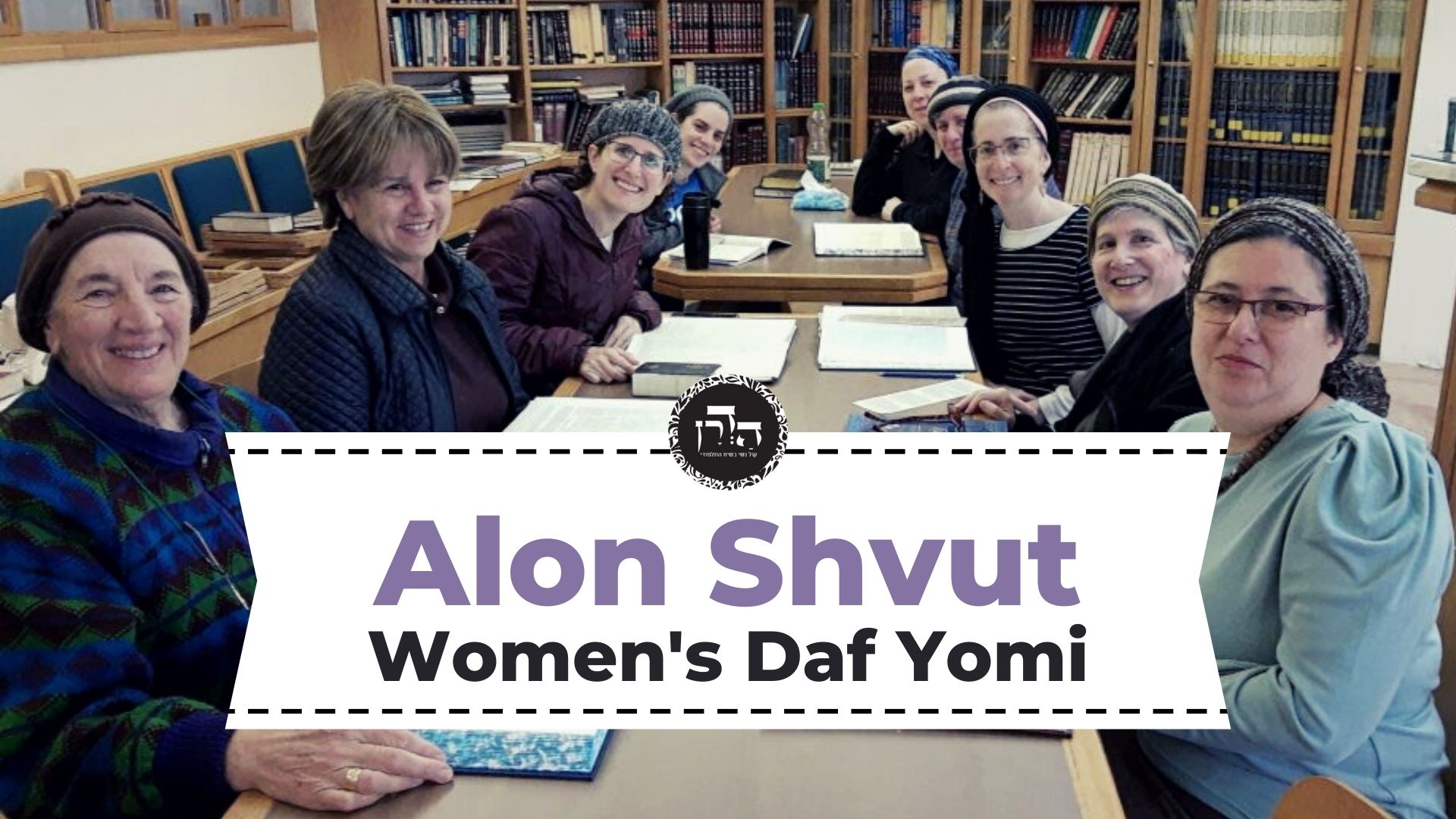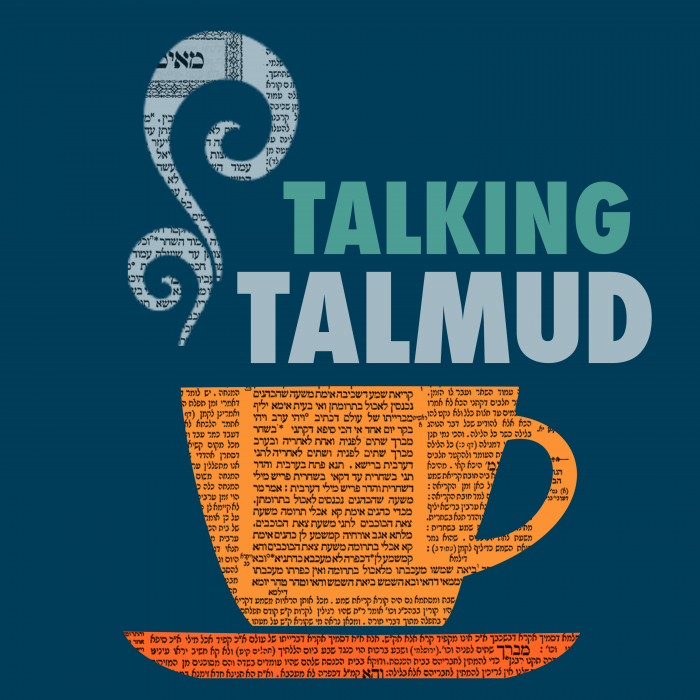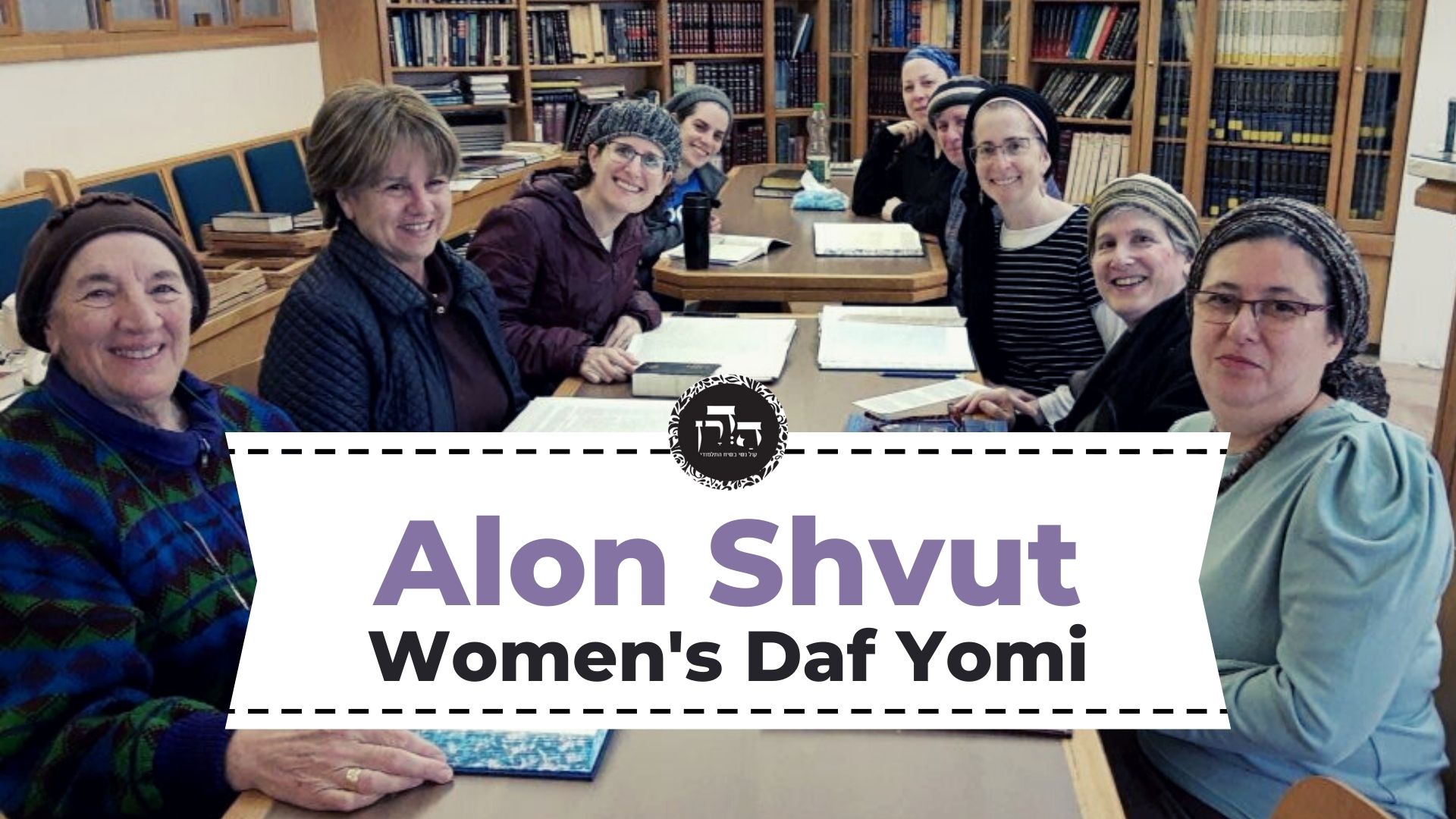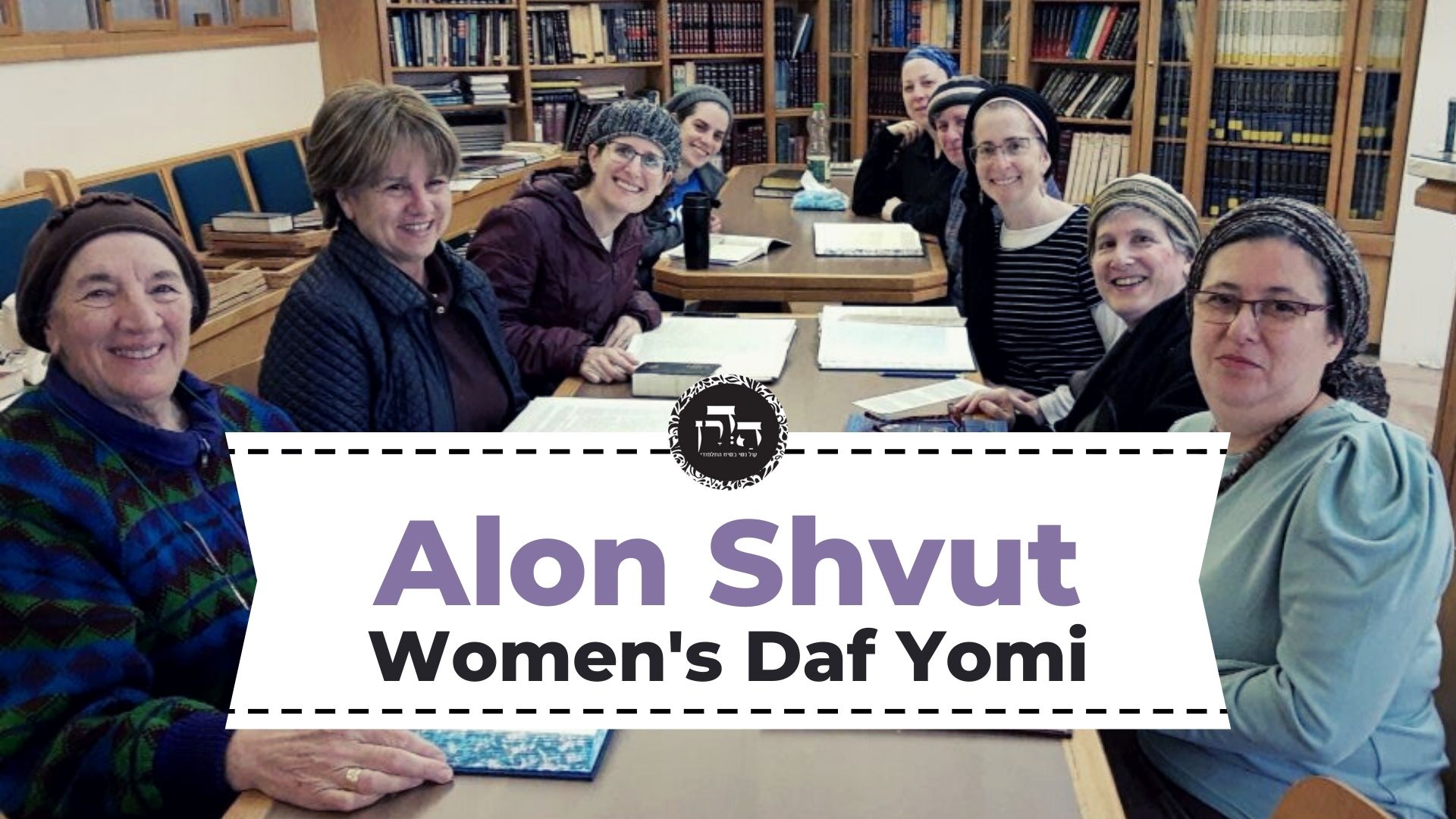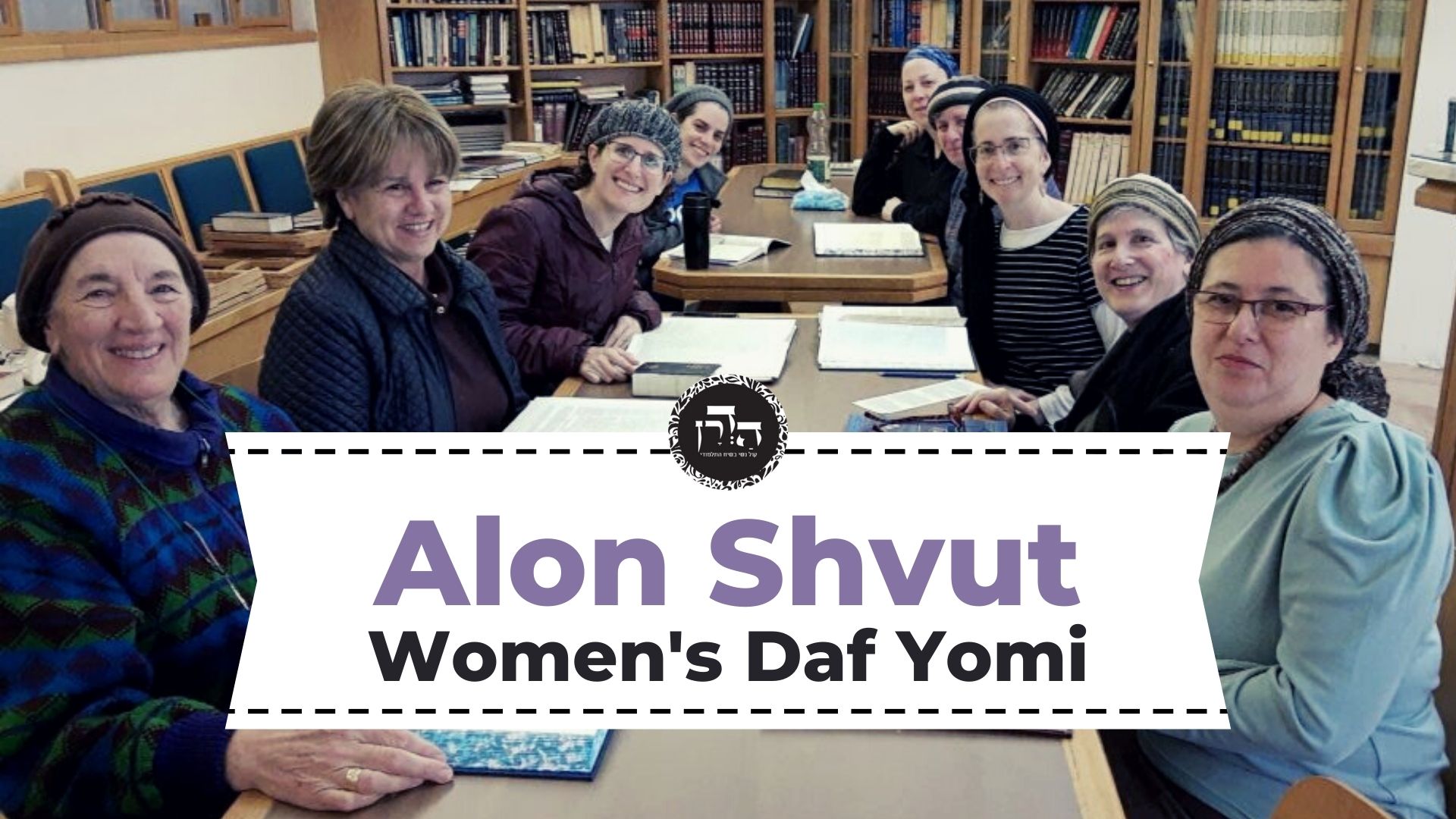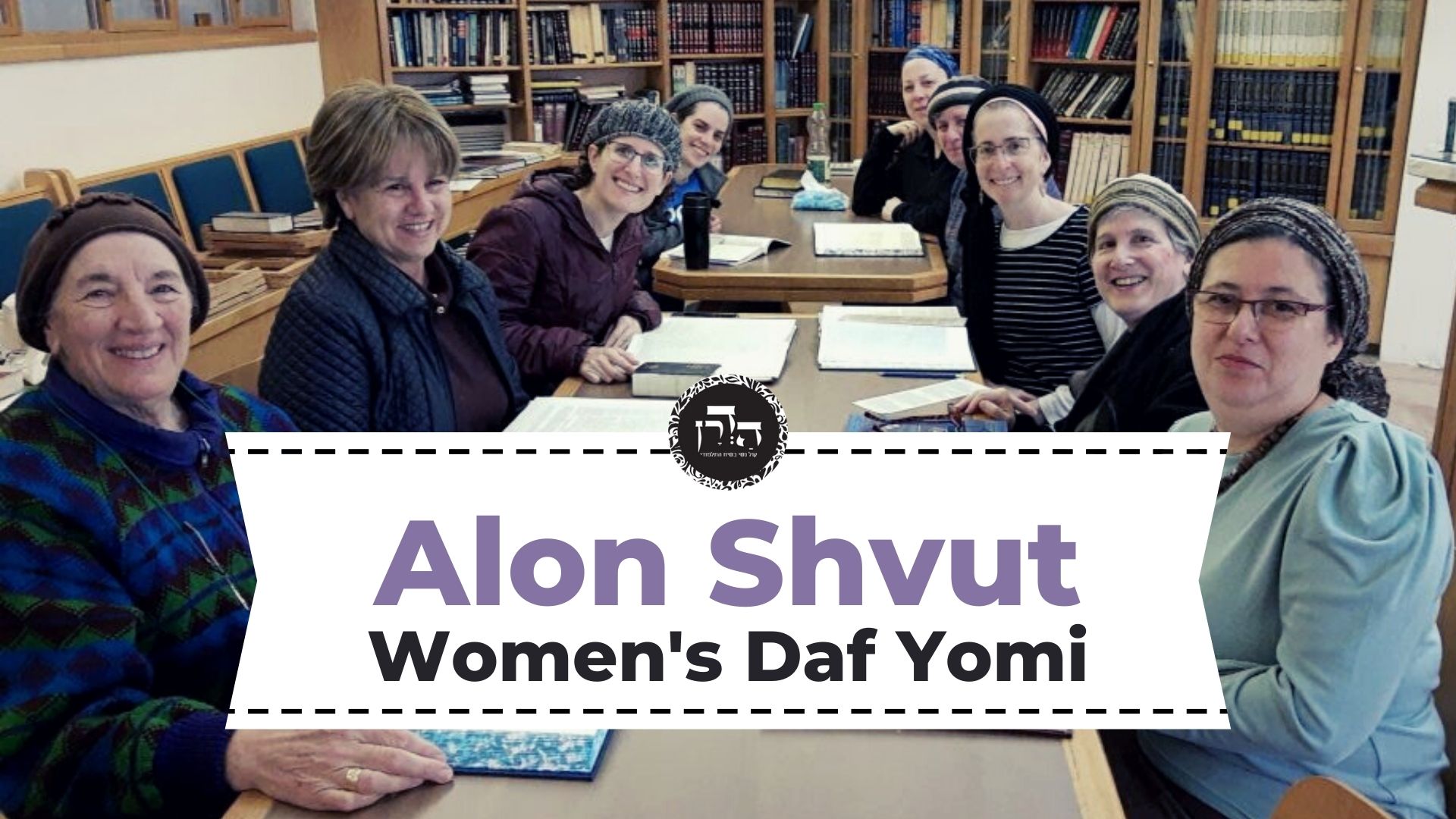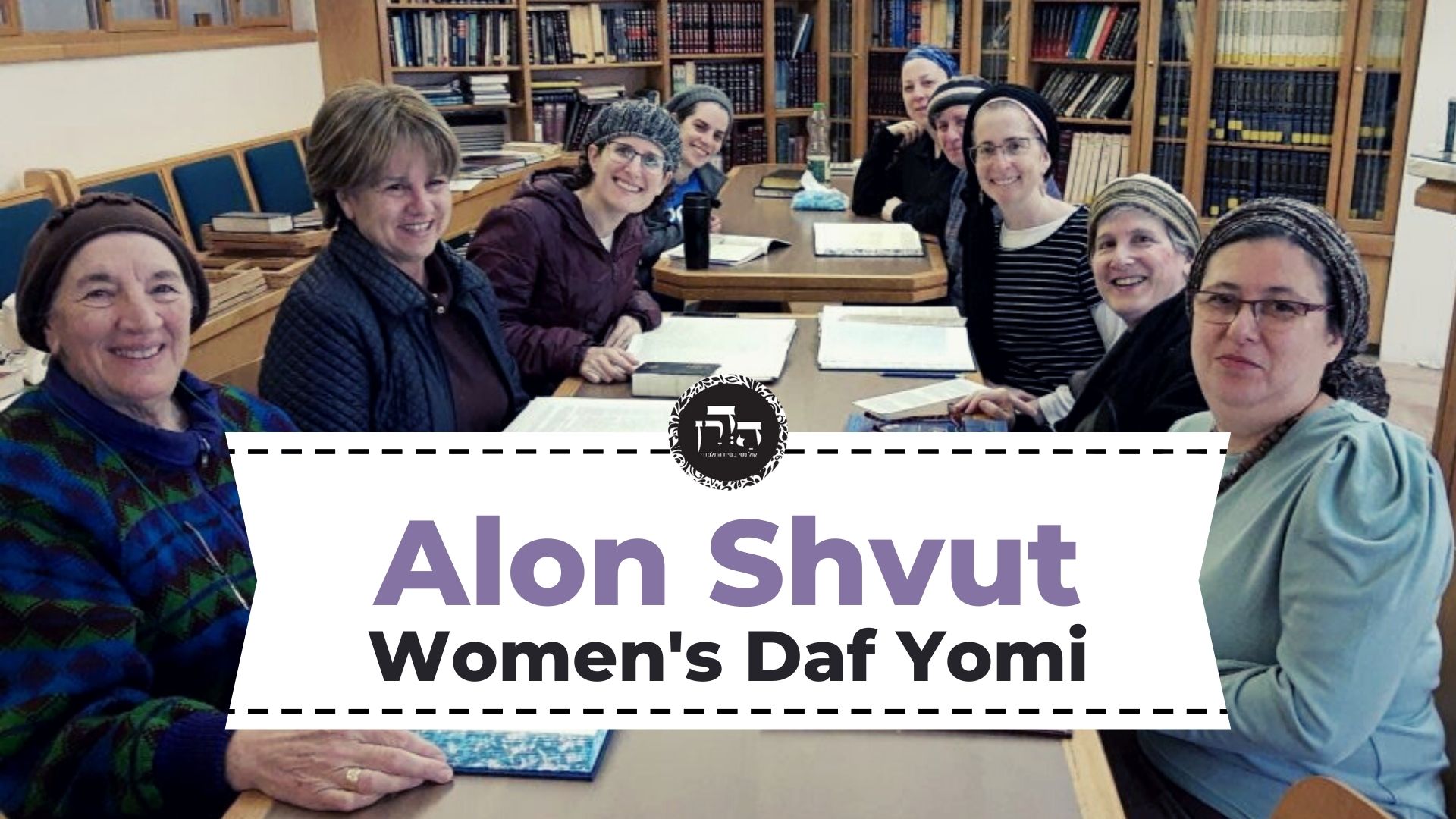Sukkah 44
אָמְרִי: לְדִידְהוּ נָמֵי לָא דָּחֵי. וְאֶלָּא קַשְׁיָא הָנֵי תַּרְתֵּי; דְּתָנָא חֲדָא: כׇּל הָעָם מוֹלִיכִין אֶת לוּלְבֵיהֶן לְהַר הַבַּיִת, וְתַנְיָא אִידַּךְ: לְבֵית הַכְּנֶסֶת, וּמְתָרְצִינַן: כָּאן — בִּזְמַן שֶׁבֵּית הַמִּקְדָּשׁ קַיָּים, כָּאן — בִּזְמַן שֶׁאֵין בֵּית הַמִּקְדָּשׁ קַיָּים.
The Sages say: For them in Eretz Yisrael it also does not override Shabbat. The Gemara asks: But if that is the case, the contradiction between these two sources is difficult, as it was taught in one mishna: All the people bring their lulavim to the Temple Mount on Friday, and it was taught in another mishna that they bring their lulavim to the synagogue. And we resolved this contradiction as follows: Here, where the mishna says that they bring their lulavim to the Temple Mount, it is referring to when the Temple is standing, and there, where the mishna says that they bring their lulavim to the synagogue, it is referring to when the Temple is not standing. Based on the above, when the Temple is not in existence the mitzva of lulav does not override Shabbat.
לָא, אִידִי וְאִידִי בִּזְמַן שֶׁבֵּית הַמִּקְדָּשׁ קַיָּים, וְלָא קַשְׁיָא: כָּאן — בַּמִּקְדָּשׁ, כָּאן — בַּגְּבוּלִין.
The Gemara resolves the contradiction: No, both this mishna and that mishna are referring to Eretz Yisrael when the Temple is in existence; and nevertheless, it is not difficult. Here, where the mishna says that they bring their lulavim to the Temple Mount, it is referring to the procedure in the Temple. And there, where the mishna says that they bring their lulavim to the synagogue, it is referring to the procedure in the outlying areas in the rest of Eretz Yisrael, where they knew when the new month was established. However, today, neither in the Diaspora nor in Eretz Yisrael does the mitzva of lulav override Shabbat.
אֲמַר לֵיהּ אַבָּיֵי לְרָבָא: מַאי שְׁנָא לוּלָב דְּעָבְדִינַן לֵיהּ שִׁבְעָה זֵכֶר לַמִּקְדָּשׁ, וּמַאי שְׁנָא עֲרָבָה דְּלָא עָבְדִינַן לַהּ שִׁבְעָה זֵכֶר לַמִּקְדָּשׁ? אֲמַר לֵיהּ: הוֹאִיל וְאָדָם יוֹצֵא יְדֵי חוֹבָתוֹ בָּעֲרָבָה שֶׁבַּלּוּלָב. אֲמַר לֵיהּ: הָהוּא מִשּׁוּם לוּלָב הוּא דְּקָא עָבֵיד לַיהּ. וְכִי תֵּימָא דְּקָא מַגְבַּהּ לַיהּ וַהֲדַר מַגְבַּהּ לַיהּ, וְהָא מַעֲשִׂים בְּכׇל יוֹם דְּלָא קָא עָבְדִינַן הָכִי!
Abaye said to Rava: What is different about lulav such that we perform the mitzva seven days in commemoration of the Temple, and what is different about the willow branch that we do not perform the mitzva seven days in commemoration of the Temple? Rava said to him: Since a person fulfills his obligation with the willow branch in the lulav, no additional commemoration is necessary. Abaye said to him: That is not a satisfactory answer, as he is performing that action due to the mitzva of taking the lulav and the other species. And if you say that he lifts the willow branch bound with the lulav to fulfill the mitzva of the four species and then lifts it again in commemoration of the willow branch in the Temple, aren’t actions performed daily proof that we do not do so, as no one lifts the lulav twice?
אָמַר רַב זְבִיד מִשְּׁמֵיהּ דְּרָבָא: לוּלָב דְּאוֹרָיְיתָא — עָבְדִינַן שִׁבְעָה זֵכֶר לַמִּקְדָּשׁ, עֲרָבָה דְּרַבָּנַן — לָא עָבְדִינַן לַהּ שִׁבְעָה זֵכֶר לַמִּקְדָּשׁ.
Rav Zevid said in the name of Rava: Since the mitzva of lulav is a mitzva by Torah law, we perform it seven days in commemoration of the Temple even today. Since the mitzva of the willow branch is a mitzva by rabbinic law, we do not perform it seven days in commemoration of the Temple.
לְמַאן? אִילֵימָא אַבָּא שָׁאוּל, הָאָמַר ״עַרְבֵי נַחַל״ כְּתִיב — שְׁתַּיִם, אַחַת לַלּוּלָב וְאַחַת לַמִּקְדָּשׁ. אִי לְרַבָּנַן, הִלְכְתָא גְּמִירִי לַהּ, דְּאָמַר רַבִּי אַסִּי אָמַר רַבִּי יוֹחָנָן מִשּׁוּם רַבִּי נְחוּנְיָא אִישׁ בִּקְעַת בֵּית חוֹרְתָן: עֶשֶׂר נְטִיעוֹת, עֲרָבָה, וְנִיסּוּךְ הַמַּיִם — הֲלָכָה לְמֹשֶׁה מִסִּינַי.
The Gemara asks: In accordance with whose opinion did Rava say this? If we say that Rava said this in accordance with the opinion of Abba Shaul, didn’t he say that it is written: Willows of the river, i.e., in the plural, indicating two willow branches, one for the lulav and one for the Temple? In his opinion, the mitzva of the willow branch in the Temple is also a mitzva by Torah law. If Rava said this in accordance with the opinion of the Rabbis, they learned this as a halakha transmitted to Moses from Sinai, as Rabbi Asi said that Rabbi Yoḥanan said in the name of Rabbi Neḥunya of the valley of Beit Ḥortan: The halakha of the ten saplings, the mitzva of the willow branch in the Temple, and the mitzva of the water libation on the altar during the festival of Sukkot are each a halakha transmitted to Moses from Sinai.
אֶלָּא, אָמַר רַב זְבִיד מִשְּׁמֵיהּ דְּרָבָא: לוּלָב דְּאִית לֵיהּ עִיקָּר מִן הַתּוֹרָה, — בַּגְּבוּלִין עָבְדִינַן לֵיהּ שִׁבְעָה זֵכֶר לַמִּקְדָּשׁ, עֲרָבָה דְּלֵית לַהּ עִיקָּר מִן הַתּוֹרָה — בַּגְּבוּלִין לָא עָבְדִינַן שִׁבְעָה זֵכֶר לַמִּקְדָּשׁ.
Rather, Rav Zevid said in the name of Rava: With regard to the mitzva of lulav, which has its basis written explicitly in the Torah, in the outlying areas we perform it seven days in commemoration of the Temple. With regard to the mitzva of the willow branch, which does not have its basis written explicitly in the Torah, in the outlying areas we do not perform it seven days in commemoration of the Temple.
אָמַר רֵישׁ לָקִישׁ: כֹּהֲנִים בַּעֲלֵי מוּמִין נִכְנָסִין בֵּין הָאוּלָם וְלַמִּזְבֵּחַ, כְּדֵי לָצֵאת בַּעֲרָבָה. אֲמַר לֵיהּ רַבִּי יוֹחָנָן: מִי אֲמָרָהּ? מִי אֲמָרָהּ?! הָא אִיהוּ אֲמַר! דְּאָמַר רַבִּי אַסִּי אָמַר רַבִּי יוֹחָנָן מִשּׁוּם רַבִּי נְחוּנְיָא אִישׁ בִּקְעַת בֵּית חוֹרְתָן: עֶשֶׂר נְטִיעוֹת, עֲרָבָה, וְנִיסּוּךְ הַמַּיִם — הֲלָכָה לְמֹשֶׁה מִסִּינַי.
Apropos the willow branch in the Temple, Reish Lakish said: Priests with physical defects enter between the Entrance Hall and the altar in order to fulfill the obligation of the mitzva of the willow branch. Although due to their blemishes it is prohibited for them to pass there, as they circle the altar with the willow branches they inevitably pass between the Entrance Hall and the altar. Rabbi Yoḥanan said to him: Who stated this halakha? The Gemara wonders about Rabbi Yoḥanan’s question: Who stated it? Didn’t Rabbi Yoḥanan himself state it? As Rabbi Asi said that Rabbi Yoḥanan said in the name of Rabbi Neḥunya of the valley of Beit Ḥortan: The halakha of the ten saplings, the mitzva of the willow branch in the Temple, and the mitzva of the water libation on the altar during the festival of Sukkot are each a halakha transmitted to Moses from Sinai.
אֶלָּא: מִי אֲמָרָהּ בִּנְטִילָה, דִּלְמָא בִּזְקִיפָה! מִי אֲמָרָהּ בְּבַעֲלֵי מוּמִין, דִּלְמָא בִּתְמִימִים!
Rather, Rabbi Yoḥanan’s question was: Who said that the mitzva is fulfilled by taking the willow branch and circling the altar? Perhaps the mitzva is only fulfilled by standing the willow branches upright surrounding the altar. Who said that the mitzva may be fulfilled even by those with physical defects? Perhaps it may be fulfilled only by unblemished priests.
אִתְּמַר: רַבִּי יוֹחָנָן וְרַבִּי יְהוֹשֻׁעַ בֶּן לֵוִי, חַד אָמַר: עֲרָבָה יְסוֹד נְבִיאִים, וְחַד אָמַר: עֲרָבָה מִנְהַג נְבִיאִים. תִּסְתַּיַּים דְּרַבִּי יוֹחָנָן הוּא דְּאָמַר יְסוֹד נְבִיאִים, דְּאָמַר רַבִּי אֲבָהוּ אָמַר רַבִּי יוֹחָנָן: עֲרָבָה יְסוֹד נְבִיאִים הוּא. תִּסְתַּיַּים.
It was stated that there is a dispute between Rabbi Yoḥanan and Rabbi Yehoshua ben Levi. One said that the mitzva of the willow branch is an ordinance of the prophets, as Haggai, Zechariah, and Malachi instituted it in the Temple as obligatory. And one said that the mitzva of the willow branch is an ancient custom practiced by the prophets and adopted by others as well. It was not instituted as a binding ordinance. The Gemara suggests: Conclude that it was Rabbi Yoḥanan who said that it is an ordinance of the prophets, as Rabbi Abbahu said that Rabbi Yoḥanan said: The mitzva of the willow branch is an ordinance of the prophets. The Gemara concurs: Indeed, conclude that it is so.
אֲמַר לֵיהּ רַבִּי זֵירָא לְרַבִּי אֲבָהוּ: מִי אָמַר רַבִּי יוֹחָנָן הָכִי? וְהָאָמַר רַבִּי יוֹחָנָן מִשּׁוּם רַבִּי נְחוּנְיָא אִישׁ בִּקְעַת בֵּית חוֹרְתָן: עֶשֶׂר נְטִיעוֹת, עֲרָבָה, וְנִיסּוּךְ הַמַּיִם — הֲלָכָה לְמֹשֶׁה מִסִּינַי? אֶשְׁתּוֹמַם כְּשָׁעָה חֲדָא וַאֲמַר, שְׁכֵחוּם וְחָזְרוּ וְיִסְּדוּם.
Rabbi Zeira said to Rabbi Abbahu: Did Rabbi Yoḥanan actually say that? Didn’t Rabbi Yoḥanan say in the name of Rabbi Neḥunya of the valley of Beit Ḥortan: The halakha of the ten saplings, the mitzva of the willow branch in the Temple, and the mitzva of the water libation on the altar during the festival of Sukkot are each a halakha transmitted to Moses from Sinai? How then could he attribute the origin of the mitzva of the willow branch to the prophets? “He was astonished for a while” (Daniel 4:16), and after considering the apparent contradiction he said that indeed Rabbi Yoḥanan maintains that the mitzva of the willow branch is a halakha transmitted to Moses from Sinai. However, over the course of time during the Babylonian exile they forgot some halakhot, including the mitzva of the willow branch, and then the prophets reinstituted them.
וּמִי אָמַר רַבִּי יוֹחָנָן הָכִי? וְהָאָמַר רַבִּי יוֹחָנָן: דִּלְכוֹן אֲמַרִי: דִּלְהוֹן הִיא! לָא קַשְׁיָא:
The Gemara asks: And did Rabbi Yoḥanan actually say that it is a halakha transmitted to Moses from Sinai? And didn’t Rabbi Yoḥanan say: Yours, i.e., the Babylonian Sages, say that this ordinance is theirs, instituted by the Sages, and it is neither a halakha transmitted to Moses from Sinai nor an ordinance instituted by the prophets. The Gemara answers: This is not difficult;
כָּאן בַּמִּקְדָּשׁ — כָּאן בַּגְּבוּלִין.
Here, where Rabbi Yoḥanan said that it is a halakha transmitted to Moses from Sinai, he is referring to the mitzva of the willow branch in the Temple; there, where he said that it was established by the prophets, he was referring to the taking of the willow branch in the outlying areas.
אָמַר רַבִּי אַמֵּי: עֲרָבָה צְרִיכָה שִׁיעוּר, וְאֵינָהּ נִיטֶּלֶת אֶלָּא בִּפְנֵי עַצְמָהּ, וְאֵין אָדָם יוֹצֵא יְדֵי חוֹבָתוֹ בָּעֲרָבָה שֶׁבַּלּוּלָב. כֵּיוָן דְּאָמַר מָר אֵינָהּ נִיטֶּלֶת אֶלָּא בִּפְנֵי עַצְמָהּ, פְּשִׁיטָא דְּאֵין אָדָם יוֹצֵא בָּעֲרָבָה שֶׁבַּלּוּלָב!
§ Rabbi Ami said: The willow branch taken to fulfill the mitzva requires a certain measure, and it is taken only in and of itself and not with the lulav, and a person does not fulfill his obligation with the willow branch that is bound with the lulav. The Gemara asks: Since the Master said: It is taken only in and of itself, it is obvious that a person does not fulfill his obligation with the willow branch that is bound with the lulav. Why are both statements necessary?
מַהוּ דְּתֵימָא: הָנֵי מִילֵּי הֵיכָא דְּלָא אַגְבְּהַיהּ וַהֲדַר אַגְבְּהַיהּ, אֲבָל אַגְבְּהַיהּ וַהֲדַר אַגְבְּהַיהּ — אֵימָא לָא, קָא מַשְׁמַע לַן. וְרַב חִסְדָּא אָמַר רַבִּי יִצְחָק: אָדָם יוֹצֵא יְדֵי חוֹבָתוֹ בָּעֲרָבָה שֶׁבַּלּוּלָב (בְּיוֹם טוֹב הָרִאשׁוֹן שֶׁל חַג).
The Gemara answers: It is necessary lest you say that this applies only to a case where he did not lift the willow branch bound with the lulav and then lift it again to fulfill the mitzva of the willow branch; however, in a case where he lifted the lulav and then lifted it again, say no, he fulfills his obligation with the willow branch in the lulav. Therefore, he teaches us that even if one takes the four species a second time with the express intent of fulfilling the mitzva of the willow branch, he did not fulfill his obligation, as he must take the willow branch by itself. And Rav Ḥisda said that Rabbi Yitzḥak said: A person fulfills his obligation with the willow branch that is bound with the lulav on the first day of the festival of Sukkot.
וְכַמָּה שִׁיעוּרָהּ? אָמַר רַב נַחְמָן: שְׁלֹשָׁה בַּדֵּי עָלִין לַחִין. וְרַב שֵׁשֶׁת אָמַר: אֲפִילּוּ עָלֶה אֶחָד וּבַד אֶחָד. עָלֶה אֶחָד וּבַד אֶחָד סָלְקָא דַּעְתָּךְ?! אֶלָּא אֵימָא: אֲפִילּוּ עָלֶה אֶחָד בְּבַד אֶחָד.
Rabbi Ami said that the willow branch requires a certain measure. The Gemara asks: And what is its requisite measure? Rav Naḥman said: It is three branches of moist leaves. And Rav Sheshet said: It is even one leaf and one branch. The Gemara wonders about the statement of Rav Sheshet: Does it enter your mind that one takes a single leaf and a single branch separately? Rather, emend Rav Sheshet’s statement and say: One fulfills his obligation even with one leaf on one branch.
אָמַר אַיְיבוּ: הֲוָה קָאֵימְנָא קַמֵּיהּ דְּרַבִּי אֶלְעָזָר בַּר צָדוֹק וְאַיְיתִי הָהוּא גַּבְרָא עֲרָבָה קַמֵּיהּ. שָׁקֵיל, חַבֵּיט חַבֵּיט, וְלָא בָּרֵיךְ. קָסָבַר מִנְהַג נְבִיאִים הוּא. אַיְיבוּ וְחִזְקִיָּה בְּנֵי בְרַתֵּיה דְּרַב אַיְיתוֹ עֲרָבָה לְקַמֵּיהּ דְּרַב, חַבֵּיט חַבֵּיט, וְלָא בָּרֵיךְ. קָא סָבַר מִנְהַג נְבִיאִים הוּא.
§ The Gemara relates that Aivu, father of the amora Rav, said: I was standing before Rabbi Elazar bar Tzadok, and a certain man brought a willow branch before him to fulfill the mitzva. He took it and waved it; he waved it and did not recite a blessing. This indicates that he holds that the mitzva of the willow branch is a custom of the prophets and is therefore performed without a blessing. Similarly, the Gemara relates that Aivu and Ḥizkiya, sons of the daughter of Rav, brought a willow branch before Rav to fulfill the mitzva. He waved it; he waved it and did not recite a blessing. This indicates that he, too, holds that it is a custom of the prophets.
אָמַר אַיְיבוּ: הֲוָה קָאֵימְנָא קַמֵּיהּ דְּרַבִּי אֶלְעָזָר בַּר צָדוֹק, אֲתָא לְקַמֵּיהּ הָהוּא גַּבְרָא, אֲמַר לֵיהּ: קִרְיָיתָא אִית לִי, כַּרְמַיָּא אִית לִי, זֵיתַיָּא אִית לִי, וְאָתוּ בְּנֵי קִרְיָיתָא וּמְקַשְׁקְשִׁין בְּכַרְמַיָּא וְאוֹכְלִין בְּזֵיתַיָּא — אֲרִיךְ אוֹ לָא אֲרִיךְ? אֲמַר לֵיהּ: לָא אֲרִיךְ. הֲוָה קָא שָׁבֵיק לֵיהּ וְאָזֵיל. אֲמַר: כְּדוּ הֲוֵיתִי דָּיַיר בְּאַרְעָא הָדָא אַרְבְּעִין שְׁנִין, וְלָא חֲמֵיתִי בַּר אִינָשׁ מְהַלֵּךְ בְּאָרְחָן דְּתָקְנָן כְּדֵין. הָדַר וְאָתֵי וְאָמַר לֵיהּ: מַאי מֶיעְבַּד? אֲמַר לֵיהּ: אַפְקַר זֵיתַיָּא לְחָשׁוֹכַיָּא, וְתֵן פְּרִיטַיָּא לְקַשְׁקוֹשֵׁי כְּרָמִים.
Apropos the exchange between Aivu and Rabbi Elazar bar Tzadok, the Gemara cites another halakha that was transmitted in the same manner. Aivu said: I was standing before Rabbi Elazar bar Tzadok, and a certain man came before him and said to him: I have villages, I have olive groves, and I have olives, and the villagers come and hoe the olive groves during the Sabbatical Year and eat from the olive trees. Is it appropriate or inappropriate to allow this to continue? He said to him: It is inappropriate. As the man was leaving him and going on his way, Rabbi Elazar bar Tzadok said: I have already resided in this land for forty years and I have not seen a person walk in a path as straight as this man does. The man came back to Rabbi Elazar bar Tzadok and said to him: What should I do to ameliorate the situation? He said to him: Declare the olives ownerless for the poor, and give perutot coins to hired laborers as payment to hoe the olive groves.
וְקַשְׁקוֹשֵׁי מִי שְׁרֵי? וְהָא תַּנְיָא: ״וְהַשְּׁבִיעִית תִּשְׁמְטֶנָּה וּנְטַשְׁתָּהּ״. ״תִּשְׁמְטֶנָּה״ — מִלְּקַשְׁקֵשׁ, ״וּנְטַשְׁתָּהּ״ — מִלְּסַקֵּל! אָמַר רַב עוּקְבָא בַּר חָמָא: תְּרֵי קִשְׁקוּשֵׁי הָווּ. חַד — סַתּוֹמֵי פִּילֵי, וְחַד — אַבְרוֹיֵי אִילָנֵי. אַבְרוֹיֵי אִילָנֵי — אָסוּר, סַתּוֹמֵי פִּילֵי — שְׁרֵי.
The Gemara asks: Is hoeing olive groves permitted during the Sabbatical Year? But wasn’t it taught in a baraita that it is written: “But the seventh year you shall let it rest and lie fallow” (Exodus 23:11); meaning you shall let it rest from hoeing, and lie fallow from clearing the field of rocks? Apparently, hoeing is prohibited during the Sabbatical Year. Rav Ukva bar Ḥama said: There are two types of hoeing, one whose objective is to seal cracks in the ground and one to enhance the trees’ health. Enhancing the trees’ health is prohibited; sealing cracks is permitted, as it is merely to prevent the trees from dying and not to accelerate their growth.
אָמַר אַיְיבוּ מִשּׁוּם רַבִּי אֶלְעָזָר בַּר צָדוֹק: אַל יְהַלֵּךְ אָדָם בְּעַרְבֵי שַׁבָּתוֹת יוֹתֵר מִשָּׁלֹשׁ פַּרְסָאוֹת. אָמַר רַב כָּהֲנָא: לָא אֲמַרַן אֶלָּא לְבֵיתֵיהּ, אֲבָל לְאוּשְׁפִּיזֵיהּ — אַמַּאי דְּנָקֵיט סְמִיךְ.
An additional halakha was transmitted in the same manner. Aivu said in the name of Rabbi Elazar bar Tzadok: A person should not walk on Shabbat eves more than a distance of three parasangs [parsaot]. Rather, he should reach the place where he will stay on Shabbat early enough to ensure that he will have meals prepared for Shabbat. Rav Kahana said: We said that restriction only with regard to a case where he is returning to his house. However, if he is going to an inn, he relies on the food that he took with him. As he cannot assume that he will find lodgings with food, he brings food sufficient for his needs. Therefore, it is permitted for him to travel a greater distance.
וְאִיכָּא דְּאָמְרִי, אָמַר רַב כָּהֲנָא: לֹא נִצְרְכָא אֶלָּא אֲפִילּוּ לְבֵיתֵיהּ. אָמַר רַב כָּהֲנָא: בְּדִידִי הֲוָה עוֹבָדָא, וַאֲפִילּוּ כָּסָא דְהַרְסָנָא לָא אַשְׁכַּחִי.
Some say that Rav Kahana said: This restriction that one may not walk a distance of more than three parasangs on Shabbat eves was required even with regard to one traveling to his house, and all the more so with regard to one traveling to an inn, as he cannot assume that he will find food there. Rav Kahana said: There was an incident that happened with me where I traveled a distance to reach my home on Friday and I did not find even small fried fish [deharsena] to eat in the house. One must prepare for Shabbat well in advance of the onset of Shabbat.
מִצְוַת לוּלָב כֵּיצַד? תָּנֵי תַּנָּא קַמֵּיהּ דְּרַב נַחְמָן: סוּדָרִין עַל גַּג הָאִיצְטְבָא. אֲמַר לֵיהּ:
§ The mishna continues: How is the mitzva of lulav fulfilled in the Temple when the first day of the Festival occurs on Shabbat? The mishna then explains how the attendants arrange their lulavim on the bench in the Temple. The tanna who recited mishnayot in the study hall taught a version of the mishna before Rav Naḥman: The attendant arranges them on the roof over the bench in the Temple. Rav Naḥman said to him:



